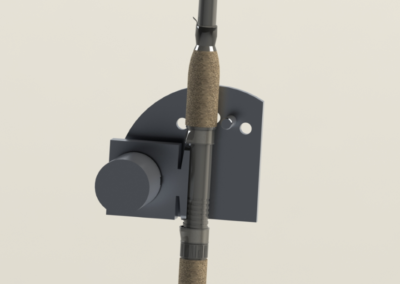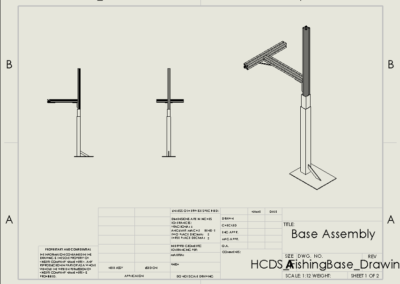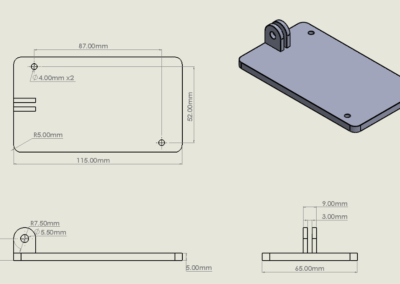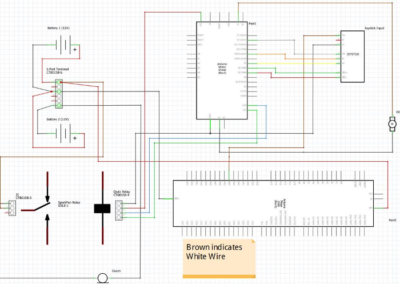HCDS Adaptive Fishing Rig
Overview
Project Overview
The adaptive fishing rig is a continuation of a project for our client, Quality of Life Plus. This device aims to allow wounded veterans to be able to independently operate a fishing rod. The goal of the rig is to be capable of casting and reeling a lure and be able to be mounted to an individual’s wheelchair, or stand-alone. For added flexibility, the rig should also be compatible with most fishing poles to allow for different types of fishing or to allow challengers to use their personal poles. The final product should be user-friendly, durable, and should be able to be manufactured using off the shelf components. In addition, this device must be versatile and adaptable to accommodate challengers with varying ranges of mobility. Lastly, and most importantly, the device should provide as natural of a fishing experience as possible. While it is important for the device to cast and reel correctly, it is equally if not more important for the device to allow the user to feel engaged in the fishing experience as natural as possible. The original concept proved not to function reliably, so a vast redesign of the initial design was necessary to obtain the required levels of functionality and reliability.
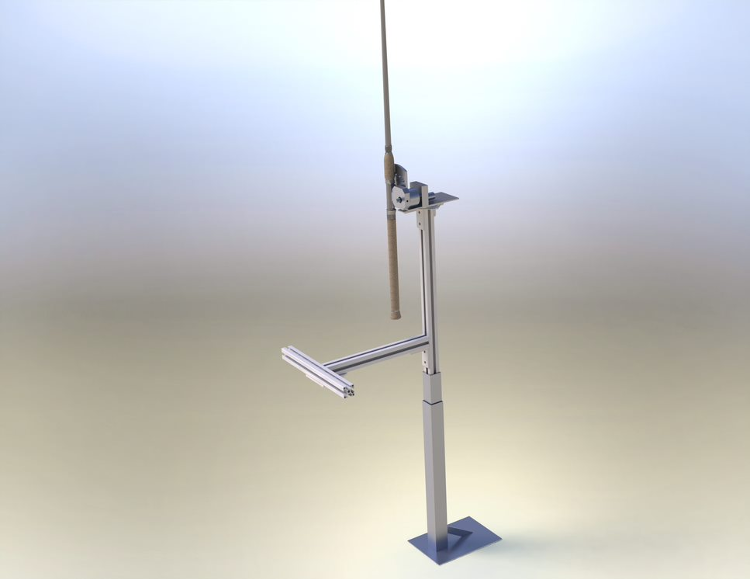
Elevator Pitch
The goal of this project is to provide an adaptable fishing device for a wide range of individuals with limited mobility. This device must be able to cast fishing line from a bank, dock, or mounted on a track chair. The device must be water resistant and durable to recover from any falls or spills of the system. The device needs to be relatively simple to allow multiple systems to be built in the future. Custom parts must be limited for the event that if any parts break, they need to be easily replaced without further machining or printing. Retrofitting the current device to fit these standards is the main project goal for this semester. Other wants of the client are adjustable line casting distances for a long or close cast and a more compact electronic setup. This will provide the user with a sturdy and functional fishing device that will not take away from the immersive fishing experience.
Design Approach
Casting & Reeling Mechanism
To create a capable system, the team came up with certain parameters for function. First, the apparatus must be able to cast and reel with commonly available fishing lure weights. Second, the system must be able to cast 60 feet so the end user can fish in lakes just as well as rivers or other places that do not necessarily require longer casts. Third, the system must be adaptable to various scenarios, with the ability to interface in multiple capacities, such as with a wheelchair, a track chair, and even just standalone. With that basic functionality, the system must also be water resistant in its components, capable of standing up to expected abuse, have easily accessible parts, and remain transportable.
Base
One of the main criteria we focused on was versatility and adaptability to accommodate as many challengers as possible. To do this we need to have a base that can be used in multiple environments while staying as a standard so other projects can use it as well. This also meant we needed to have several control interfaces so challengers with different abilities can still use our rig. With all control types the challenger must be able to cast and reel for the rig to work.
Electronics
In terms of the electronics, we wanted the system’s casting and reeling functionality to be controllable with both a joystick as well as the Sip & Puff. This would allow our system to be usable by a more diverse group of challengers.
Sip & Puff GoPro Mount
In order to accommodate as many challengers as possible, this device is equipped with a Sip & Puff control system for challengers with limited mobility. This allows the challengers to cast and reel with simple mouth controls. The Sip & Puff system has a control box with a tube protruding which senses the user either blow or suck in air. It is important for this tube to be as short as possible to reduce the amount of pressure needed to activate the sensor. For example, a longer tube will require a user to blow harder than a shorter tube.

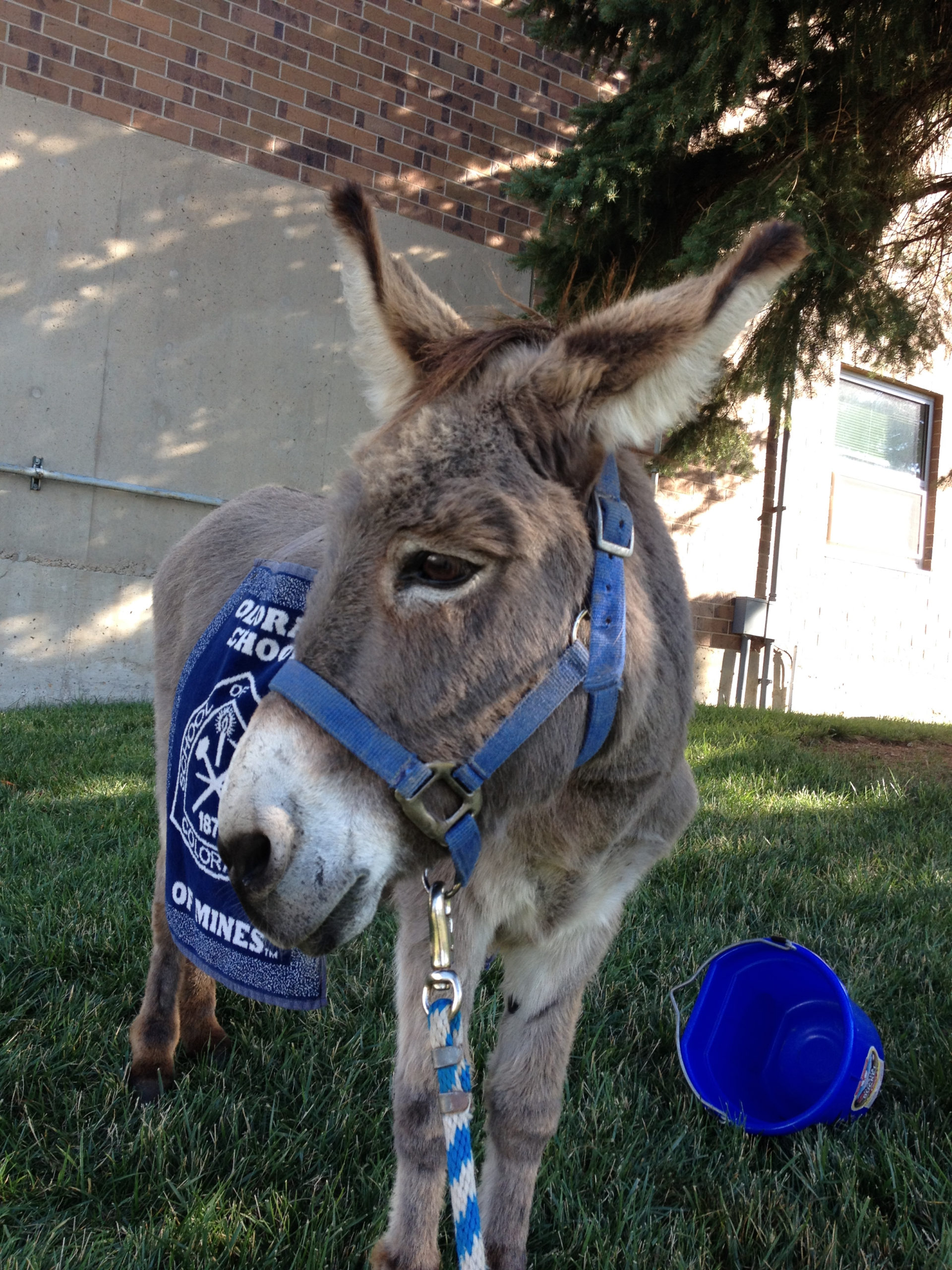
Design Solution
Casting & Reeling Mechanism
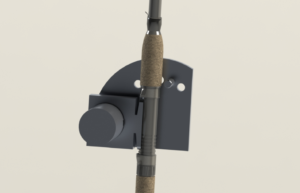
The casting motion is achieved by directly attaching the fishing pole to the electric motor via a part that incorporates a standard fishing reel foot. As the reel on the adaptive fishing system is separated from the pole, the reel location on the pole is empty. This mounting system allows the challengers to easily swap out poles without issue as this reel mount is standard for all poles (see picture). Next, a bracket with multiple holes is placed near the pole with a clevis pin that acts as a stop so the challenger can adjust the angle at which the pole stops its rotation and the line is released.
The timing of the cast is important, so a cable is attached to the release lever (on the reel) and then is wired to the pole in a manner to release at the desired time. The pole is pulled back by the motor to obtain potential energy from a spring stretching, so when the clutch on the motor is released, the pole flies forward and the line is released from the reel by the aforementioned cable mechanism, right before the pole hits the stop, allowing for a properly timed cast.
Base
The foundation of the system is of course one of the most important parts. With the base comes mounting of the mechanical and electrical components, as well as mounting of the apparatus as a whole to the desired fishing location. With that known, the team decided to build the base out of 80/20, which is a structural, extruded aluminum that is slotted for the ability to attach multiple accessories or more 80/20 parts. This aluminum is both strong and resistant to environmental factors we expect the system to see. In addition, as the 80/20 structural material is slotted, adjustments in height of the armrest is available, and mounting in general is simplified for all other components. The 80/20 was also selected to fit into the base of the Caldwell Deadshot which is used in multiple other projects and has multiple mounting options. That is, that the fishing apparatus will fit the bases of the adaptive shooting apparatus and the adaptive archery system. This base system can be mounted to a base plate for use with a wheelchair, on a trackchair, and anywhere else the caldwell base can mount. This makes it so that Craig Hospital only has to have one Caldwell base for all the adaptive sporting projects.
Electronics
In terms of the electronics, we wanted the system’s casting and reeling functionality to be controllable with both a joystick as well as the Sip & Puff. This would allow our system to be usable by a more diverse group of challengers.
The design for the electronic controls consisted of implementing the joystick and Sip & Puff input methods. The joystick provides the user with four input options (forward, left, right, down), and each corresponds to one of the following: cast, slow reel, medium reel, fast reel. Allowing the challenger to select a specific reel speed enhances the overall fishing experience for the user.
The Sip & Puff input method for the electronics does not have the same three-reel speed options that the joystick method provides. This is simply due to the two-input limitation that the Sip & Puff possesses. Sipping on the device initiates the casting of the rod. This assignment was chosen to prevent the user from having to Sip rapidly to reel a fish in, as this would likely result in light headedness. As far as reeling goes, puffing on the device initiates the medium reel speed.
Sip & Puff Mounting
In order to accommodate as many challengers as possible, this device is equipped with a Sip & Puff control system for challengers with limited mobility. This allows the challengers to cast and reel with simple mouth controls. The Sip & Puff system has a control box with a tube protruding which senses the user either blow or suck in air. It is important for this tube to be as short as possible to reduce the amount of pressure needed to activate the sensor. For example, a longer tube will require a user to blow harder than a shorter tube. In order to reduce the length of this tube, we must relocate the control box closer to the user’s mouth. To do this, an adapter was designed to be 3D printed and interface with a typical Go-Pro mount and the control box. A Go-Pro mount adapter was chosen because it is very common, and because there exist many different Go-Pro mount harnesses that each challenger can choose to use. This allows for each challenger to pick a harness that fits them the best. A chest harness, for example, has a Go-Pro mount near the shoulder, which is perfect for this scenario, as the adapter will simply latch onto the mount and greatly reduce the distance of the Sip & Puff tube needed.
An illustration of this adapter is shown below. The dark grey piece on top is the 3D printed adapter, and the lighter grey box on the bottom is the control box for the Sip & Puff system. The two round posts on the adapter is the standard Go-Pro connector, allowing it to fit with many different harnesses. The adapter simply bolts to the control box, via the 2 small holes near the edges.
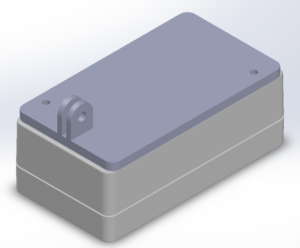
Next Steps
While much progress has been made on this project, there are some design changes that should be made if this project is taken further by a subsequent team. Much of the improvements that could be made to this device are in the casting and reeling mechanisms. Currently, these systems function as intended, but consistency is lacking, and reliability is questionable. This can be attributed to poor connections between our reel/pole and their respective motors. A new design has been created so that the pole rotates directly on the motor, simplifying the motion. It also includes an adjustable stop to change the release point of the pole. These design changes will need to be implemented next semester. Additional improvements to the device could be made to improve ergonomics for the user. Currently, there is no padding for the challenger’s arm when using the joystick, and the support for the armrest is a static piece of the frame. To improve this, padding could be added to the armrest, and a hinge could be added to the armrest to allow for the support to collapse and make for easier transport. Final documentation, like the manual, will need to be written to complete the project.
Meet the Team
Brennan Guthals
Mechanical engineering student graduating in May 2020
Brennon Saucier
Mechanical engineering student graduating in May 2020
Gabriel Maestas
Mechanical engineering student graduating in May 2020
Jen Broderick
Mechanical engineering student graduating in May 2020
Josh Cogan
Mechanical engineering student graduating in May 2020
Stone Martin
Electrical engineering student graduating in May 2020
Tristan Robinson
Mechanical engineering student graduating in May 2020
Nick Holewinski
Mechanical engineering student graduating in May 2020
